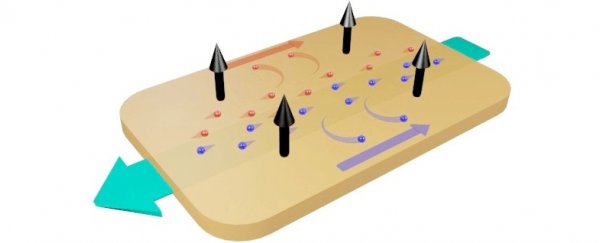Researchers have found a material that could be used to build smaller and fast electronics in the future. Known as niobium phosphide, the material's electronic resistance increases dramatically when it's exposed to a magnetic field.
Known as giant magnetoresistance, this property is crucial to achieving the large storage capacity we've come to enjoy in our hard drives, but up until now had only been demonstrated in complex materials that are expensive to make.
Now researchers in Germany have demonstrated the same property in niobium phosphide, a simple compound material that they say could build faster and cheaper electronics.
Giant magnetoresistance is so important because helps computers to quickly read the information that's stored magnetically in hard drives. When materials with giant magnetoresistance are exposed to a magnetic field, they significantly alter their electronic resistance. And the greater this change in resistance, the faster we can process information.
Which is why the discovery of niobium phosphide is so exciting: "[the scientists] have observed a rapid increase in resistance by a factor of 10,000 in a non-complex material," the press release explains.
The material has such incredible magnetoresistance because of another interesting property - its electrons are superfast, with a top speed of around 300 km/s.
In a magnetic field, this makes them vulnerable to a phenomenon known the Lorentz force, which causes an increasing percentage of electrons to flow in the 'wrong' direction as the magnetic field becomes stronger.
"The faster the electrons in the material move, the greater the Lorentz force and thus the effect of a magnetic field," explains Binghai Yan, one of the lead researchers from the Max Planck Institute for Chemical Physics of Solids in Germany.
Because of this force, the team observed extremely large magnetoresistance of 250 percent at room temperature. In comparison, the materials that are currently used in hard drives generally exhibit magnetoresistance of between 40 and 110 percent at room temperature.
Publishing their results in Nature Physics, the team was also able to demonstrate that this magnetoresistance is thanks to unique electronic states in niobium phosphide, which make some of its electrons act as if they have no mass and allows them to zoom around at such incredible speeds.
They believe that with further development, the material could be a prime candidate for building faster and more efficient electronics.
"The effect that we've discovered in niobium phosphide could certainly be improved by means of skilled material design," said Yan. "This material class therefore has enormous potential for future applications in information technology."
